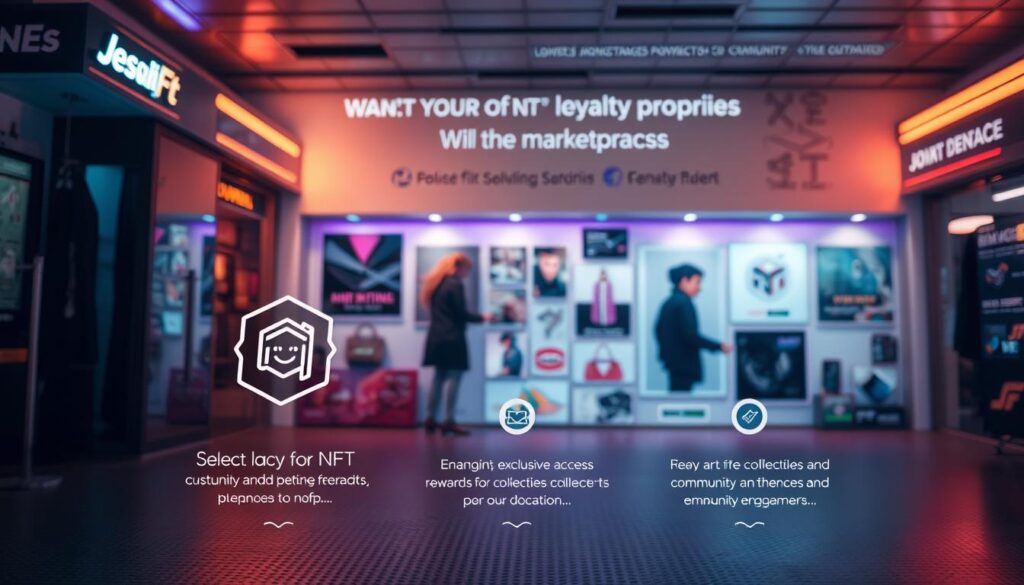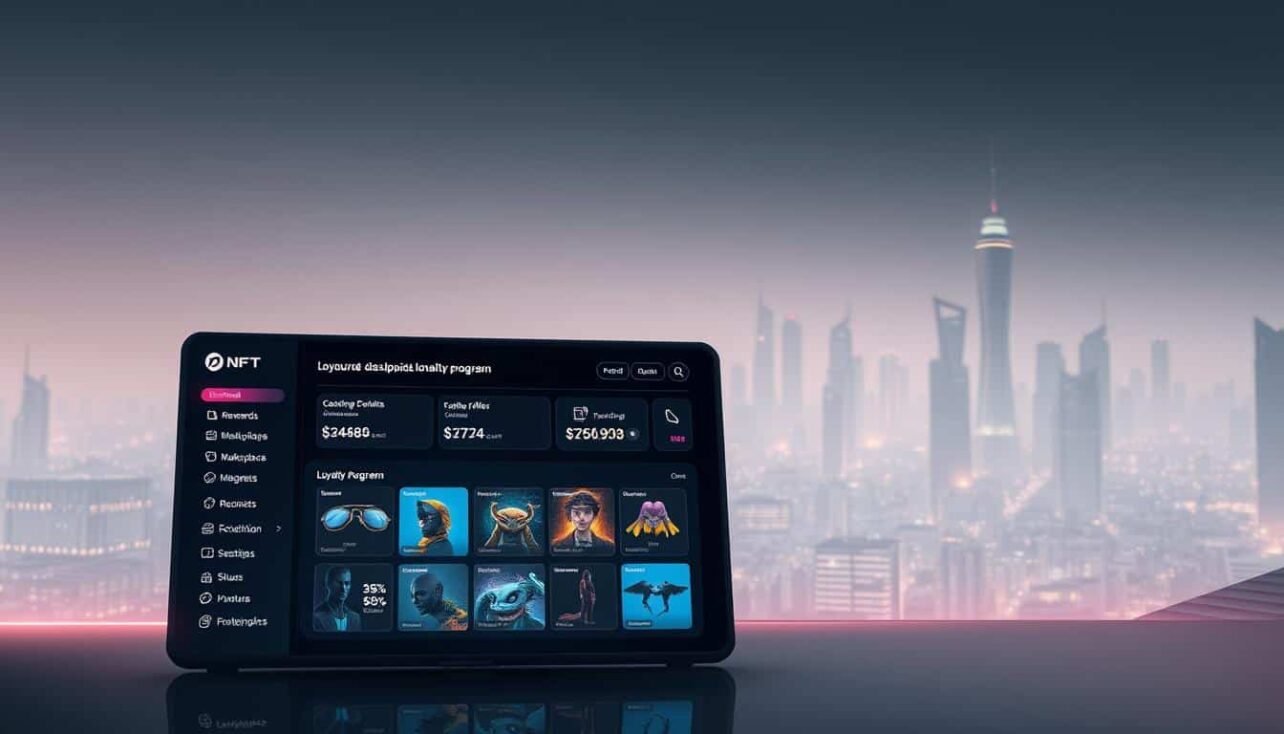Brands have taken loyalty from paper punch cards to verified digital ownership. Today, customers can hold unique tokens recorded on a blockchain that prove ownership and unlock special access. This shift adds transparency, tradability, and a clearer value exchange between brands and buyers.
Layered reward systems use Bronze, Silver, and Gold tiers to gamify progress and deepen engagement. Token-gating limits perks or drops to holders, while flexible reward design turns static points into personalized digital assets that adapt to behavior.
Real examples show traction: Starbucks Odyssey let members earn NFT stamps and buy limited editions with a credit card, no crypto wallet needed. Clinique ran a story-led raffle announced by ambassadors, boosting social buzz across Instagram, TikTok, and Twitter.
This guide previews models, integrations, and measurement so marketers and product teams can plan a scalable offering with clear ROI. It also flags responsible tech choices like chain selection and environmental impacts that matter to customers and brand values.
Key Takeaways
- Digital ownership on a blockchain raises trust and makes rewards tradable.
- Token-gated access and tiered tokens increase engagement and perceived value.
- Real-world cases show easier checkout and stronger social reach.
- Design must balance experience, measurement, and environmental choices.
- This guide covers strategy and tech so teams can build with clear ROI.
What Are NFT Loyalty Programs and Why They Matter Now
Modern reward systems now add verifiable ownership to perks, changing how brands and customers connect. This shift moves benefits from simple app points to unique digital assets that can be held, displayed, or transferred.
From punch cards to blockchain: the loyalty evolution
For decades, paper punch cards tracked visits. Apps digitized that same idea but often kept rewards locked to a single account. Today, brands use token-based models on blockchains like Ethereum or scaling networks such as Polygon to make rewards portable and verifiable.
Defining non-fungible tokens and digital collectibles
Non-fungible tokens are unique ledger entries that record provenance and ownership. Unlike interchangeable points, these items are scarce, traceable, and can represent art, sports moments, or branded assets.
The blockchain records token metadata — name, description, and the source — while the actual media usually lives off-chain with a link inside the token. That separation keeps files flexible while preserving proof of ownership.

Why this matters: customers gain verifiable ownership and richer media formats. Brands gain new applications such as membership passes, event access, and collectible badges that better reflect customer behavior and preference.
NFT marketplace loyalty programs: core benefits for brands and customers
Immutable ledgers and open verification make digital rewards trustworthy. Blockchain records every transfer and ownership change, so customers and brands can audit history without doubt.

Transparency, security, and verified ownership on blockchain
Transaction records reduce fraud and simplify audits. This clarity boosts trust and protects both the brand and the customer.
Personalized rewards and a stronger sense of community
Evolving tokens let brands tailor benefits over time. Membership tiers—Bronze, Silver, Gold—can change as customers hit milestones.
Collectible drops and limited editions help form shared moments that strengthen community ties.
Gamified engagement, tradability, and lasting value
Leveling, quests, and set collection drive repeat engagement and higher retention. Tradable assets add secondary-market value that keeps customers active after redemption.
- Verified records: tamper-resistant history for rewards and ownership.
- Personalization: tokens adapt to behavior and preferences.
- Scarcity & access: token-gated events and early product access feel premium.
| Benefit | For Brands | For Customers |
|---|---|---|
| Trust | Audit trail | Clear ownership |
| Engagement | Higher retention | Fun, repeatable rewards |
| Value | New revenue streams | Tradable assets |
How NFTs Transform Traditional Reward Structures
Brands can turn simple points into unique digital assets that transfer real ownership and market value. Points that once expired or stayed locked to an account can become tradeable items customers keep, show, or resell.

From fungible points to unique, tradable assets
Fungible points are interchangeable and anonymous. By contrast, one-of-a-kind tokens create provenance and emotional value.
Customers shift from passive collectors to owners who feel a stronger sense of achievement.
Token-gated access, tiers, and evolving membership tokens
Layered systems issue Bronze, Silver, and Gold tokens that unlock escalating benefits.
Membership tokens can evolve visually and functionally as customer behavior changes, reflecting true participation and milestones.
Blending digital art, perks, and real-world experiences
Attach digital collectibles and exclusive media to rewards to tell a brand story.
Combine art with tangible perks—VIP support, early products, or event access—to deliver clear value to customers.
- Convert points into tradable assets to increase perceived value.
- Design evolving tokens that upgrade with real actions.
- Use token-gating for early drops, limited runs, and exclusive media.
| Feature | Brand Outcome | Customer Benefit | Example |
|---|---|---|---|
| Tradable assets | New revenue & secondary markets | Resell or keep value | Bronze/Silver/Gold collectible sales |
| Evolving membership | Better segmentation | Visible status and perks | Tier upgrades based on product behavior |
| Token-gated access | Stronger launch impact | Early access to events/products | Pre-sale for token holders |
| Digital art + perks | Enhanced storytelling | Identity and belongings to showcase | Art-backed passes for concerts |
Program Models That Work: Points, Paid, Value, and Tiered Frameworks
A practical model pairs behavioral data with collectible passes to turn purchases into identity.

Points-based approaches mint unique tokens that record purchase signals. These items enable personalization and optional secondary-market activity. Customers get tailored offers based on encoded behavior.
Membership and paid passes
Paid passes act as ongoing access keys that bundle perks like exclusive drops or concierge support. They stabilize revenue and deepen retention for brands.
Cause-driven value and badges
Badge-style collectibles celebrate participation in sustainability or charity drives. They boost advocacy and make impact visible to other customers.
- Tiered rewards: Bronze, Silver, Gold tokens with escalating perks and voting rights.
- Art-backed sets: themed digital collectibles that reinforce identity and storytelling.
- Operational notes: supply design, allowlists, issuance cadence, and benefit schedules.
| Model | Customer Outcome | Brand Outcome |
|---|---|---|
| Points-as-collectible | Personalized rewards; tradable value | Higher frequency; data-rich signals |
| Paid membership | Ongoing perks; predictable access | Steady revenue; stronger retention |
| Cause badges | Meaningful participation; social proof | Increased advocacy; brand trust |
| Tiered tokens | Status, VIP access, product input | Upsell opportunities; clear segmentation |
Practical tip: test mixes—points plus tiers or paid plus cause—to balance margin impact with sustained enthusiasm and fair access.
Choosing the Right Blockchain and Platform Stack
Selecting the right chain and stack determines whether your offering scales under real customer load. Evaluate trade-offs between security, fees, and throughput so drops, claims, and redemptions stay reliable at peak demand.
Ethereum offers strong security and wide adoption but can bring high gas fees and congestion. Polygon, Solana, and Flow provide lower-cost, high-throughput options that suit high-frequency use cases for a loyalty program.
Assess platform ecosystems: SDKs, APIs, wallets, and integrations cut engineering time and speed time-to-value. Strong developer tools also improve interoperability and protect brand assets while enabling cross-platform movement.
- Security & interoperability: ensure assets can move safely and that customer data remains private.
- Environmental posture: favor energy-efficient chains and explain choices to customers and stakeholders.
- User experience: design web2 sign-ins, custodial wallets, and fiat onramps like Starbucks’ credit-card checkout to lower friction.
| Consideration | Ethereum | Polygon / Solana / Flow |
|---|---|---|
| Fees & speed | Higher fees, slower at scale | Lower fees, faster throughput |
| Developer tools | Large ecosystem | Growing SDKs and APIs |
| Environmental impact | Historically higher (PoW past) | More energy-efficient options |
Plan SLAs, data governance, and load tests before launch. Prototype to validate costs and the user experience across devices. For deeper reading on architecture choices, see this blockchain-based loyalty study.
Integrations That Drive Engagement and Monetization
Smart connections between channels make digital assets drive real customer action. Integrations extend utility so customers move from discovery to purchase and repeat visits. E-commerce links, social activations, and immersive utilities each add measurable value.
E-commerce benefits: discounts, early access, exclusive drops
Connect collectibles to checkout to unlock gated product drops, member bundles, or early access windows. These flows lift conversion and average order value while giving customers clear perks.
- Gated drops and member-only bundles that increase purchase frequency.
- Token-gated flash events to move excess inventory or reward superfans.
- Support cross-platform wallets and simple sign-ins to reduce friction.
Social media activation: contests, sharing, and virality
Use social media contests and sharing mechanics to create viral moments. Clinique’s story-led raffle across Instagram, TikTok, and Twitter is a prime example of earned reach and participation.
Gaming, VR, and DeFi utilities for added participation
Add gaming or VR use-cases so customers deploy assets inside immersive worlds. Consider DeFi options like staking selected items for periodic rewards — balance compliance and risk, and track engagement closely.
| Channel | Primary Benefit | Key KPI |
|---|---|---|
| Commerce | Higher AOV and conversion | Order value, repeat buys |
| Social media | Viral reach and UGC | Shares, impressions |
| Gaming / DeFi | Longer time-on-brand | Retention, staking participation |
Tip: track cross-channel engagement and adapt integrations to brand goals. For a practical build checklist, see this how to create an NFT loyalty.
Real-World Inspiration: Starbucks, Clinique, and Emerging Brand Plays
High-profile brand pilots show how collectible stamps and social mechanics turn casual buyers into repeat customers. These case studies offer concrete tactics companies can adapt to fit audience, category, and scale.
Starbucks Odyssey: activity stamps and friction-free checkout
Starbucks let members earn or buy stamped collectibles by completing challenges and games. Rarity tiers unlocked perks like bonus points, classes, and exclusive events.
Key move: credit card checkout removed wallet and crypto barriers, making the experience feel like a normal purchase for mainstream customers.
On-chain ownership tied to off-chain experiences so customers saw real, usable value beyond collecting art.
Clinique’s story-driven raffle and ambassador hype
Clinique ran a limited-time raffle that asked customers to share stories on Instagram, TikTok, and Twitter to enter. Winners received color-changing art pieces plus sought-after product bundles.
Announcements by Emilia Clarke and Melissa Barrera amplified press and social media reach, proving ambassadors can validate creative drops.
Playbook tips for brands:
- Limit supply to create mystique and urgency.
- Pair collectibles with products or event access for practical value.
- Use clear timelines and simple entry paths to boost participation.
| Tactic | Outcome | Why it works |
|---|---|---|
| Activity stamps | Repeat visits | Gamifies behavior into measurable actions |
| Fiat checkout | Higher conversion | Removes crypto friction for users |
| Ambassador reveal | Earned media | Drives credibility and social buzz |
User experience lessons: keep sign-up simple, explain benefit clearly, and share outcomes with the community. Small design choices—art direction, cross-platform entries, and product tie-ins—turn one-off activations into repeatable brand value.
Making It Work Long-Term: Data, Measurement, and Next Steps
A data-first approach helps teams prove value, iterate offers, and keep customers engaged over time. Define a measurement framework that tracks on-chain actions (mints, transfers, redemptions) and off-chain KPIs like repeat purchase rate, basket size, and referral lift.
Use cohort analysis to compare holders of digital collectibles to non-holders. That isolates incremental value and guides future marketing and product decisions.
Finance future benefits by leveraging programmable royalties from secondary sales to fund limited runs, events, or added perks. Establish governance and sunsetting rules for assets and platforms to protect brand and customer interests.
Finally, reduce friction, map risk controls, and keep the community informed with regular updates. Pilot, measure, and scale the program in phases so the experience evolves with customer behavior and business goals.
FAQ
Q: What are NFT loyalty programs and why are they gaining traction now?
A: Digital collectible loyalty programs use non-fungible tokens to deliver verifiable ownership, scarce rewards, and unique experiences. Brands adopt them because blockchain enables transparency, secondary-market value, and deeper engagement beyond traditional points systems.
Q: How do these programs differ from classic punch-card or points schemes?
A: Instead of anonymous, fungible points, participants receive unique digital assets that can evolve, be traded, or unlock exclusive access. This shift creates lasting value, stronger identity in communities, and new revenue from resales.
Q: What real benefits do companies and customers get from using token-based rewards?
A: Companies gain richer first-party data, stronger brand loyalty, and new monetization channels. Customers receive verifiable perks, collectible art, early access to products, and potential secondary-market value for their assets.
Q: Are these digital collectibles secure and truly owned by customers?
A: When built on a reputable blockchain like Ethereum, Polygon, Solana, or Flow, tokens carry cryptographic proof of ownership and provenance. Proper smart contract audits and wallet best practices further reduce risk.
Q: How can brands use tokens to create tiered memberships or VIP access?
A: Brands layer tokens to represent tiers—Bronze, Silver, Gold—or issue evolving membership tokens that unlock exclusive events, discounts, or gated content. Token-gating integrates with websites, apps, and point-of-sale systems for seamless access.
Q: What are common program models that work for different industries?
A: Effective models include points-to-token conversion, paid-collectible memberships, value-share tokens tied to causes, and badge-style systems for achievements. Retail, hospitality, and entertainment often mix tiers with experiential rewards.
Q: Which blockchains should brands consider for these initiatives?
A: Choose based on scalability, fees, and ecosystem: Ethereum offers broad tooling but higher costs; Polygon and Solana provide lower fees and speed; Flow focuses on consumer apps. Consider interoperability, developer support, and environmental footprint.
Q: How do you ensure a smooth user experience for customers unfamiliar with wallets and crypto?
A: Prioritize simple onboarding with custodial or social wallets, fiat onramps, and clear guides. Abstract blockchain complexity and offer customer support to reduce friction and improve adoption.
Q: Can tokens be used across channels like e-commerce, social, and gaming?
A: Yes. Tokens enable discounts and exclusive drops in e-commerce, social campaigns and contests for virality, and in-game utilities or VR experiences. Cross-channel use boosts engagement and lifetime value.
Q: What measurement should brands track to evaluate success?
A: Track activation and redemption rates, secondary-market activity, customer retention, average spend, and community growth. Combine on-chain metrics with CRM data to measure true business impact.
Q: Are there environmental or regulatory concerns to consider?
A: Brands should assess energy usage by choosing energy-efficient chains and follow securities, tax, and consumer-protection rules in each market. Work with legal counsel to design compliant, transparent programs.
Q: How can small or emerging brands start without large budgets?
A: Start with limited drops, low-cost chains like Polygon, badge-style tokens, or partner with platforms that handle infrastructure. Pilot programs let teams learn and iterate before scaling.
Q: What makes a token reward feel valuable rather than gimmicky?
A: Value comes from utility, scarcity, storytelling, and real benefits—exclusive events, tangible discounts, or creative collaborations with artists. Combine strong creative direction with clear ongoing perks.
Q: Can customers resell or transfer their tokens, and how does that affect brands?
A: Yes, many tokens are tradable, creating aftermarket value that benefits collectors and can extend brand reach. Brands can design royalties or follow-up drops to capture long-term engagement and revenue.
Q: Which brands have proven models to study for inspiration?
A: Look at Starbucks Odyssey for stamps and challenges, Clinique for raffle-driven engagement, and other consumer brands experimenting with memberships and access to learn practical tactics and pitfalls.


No comments yet